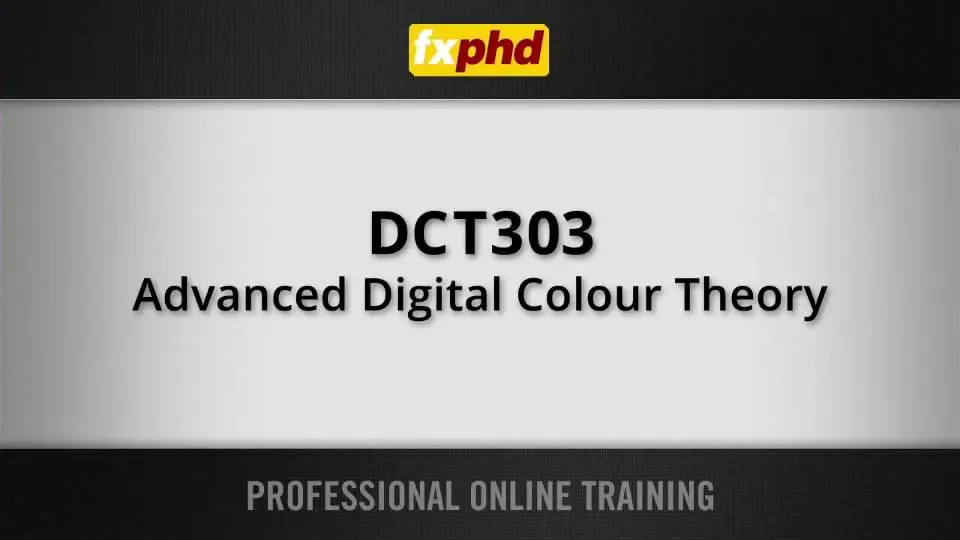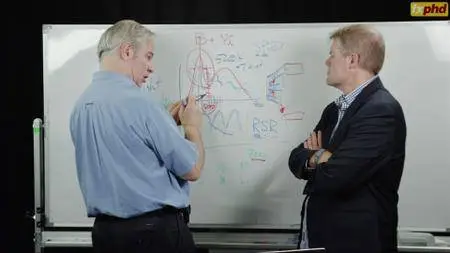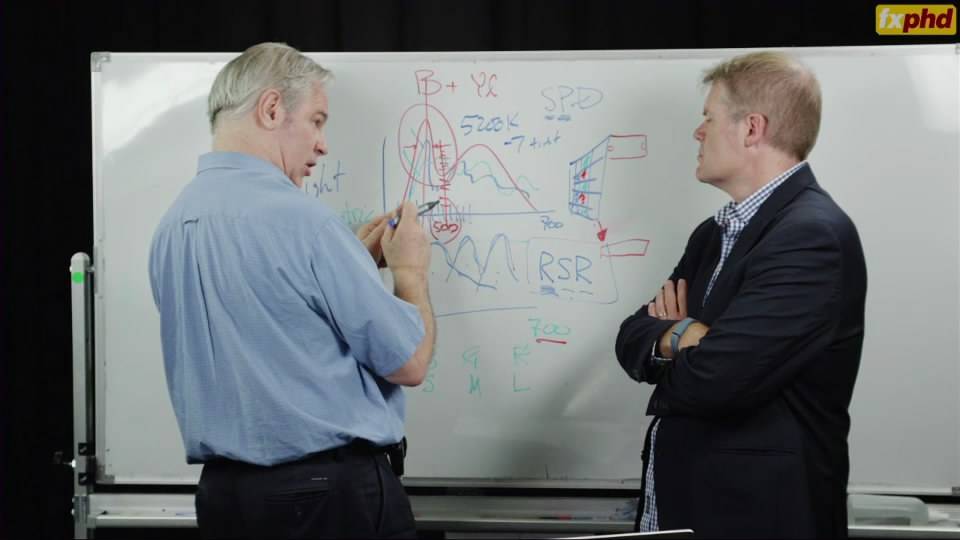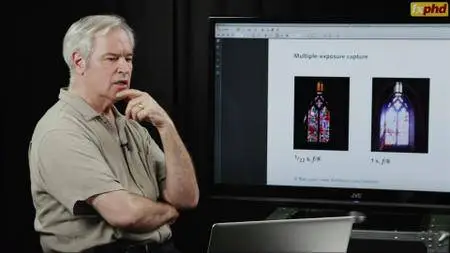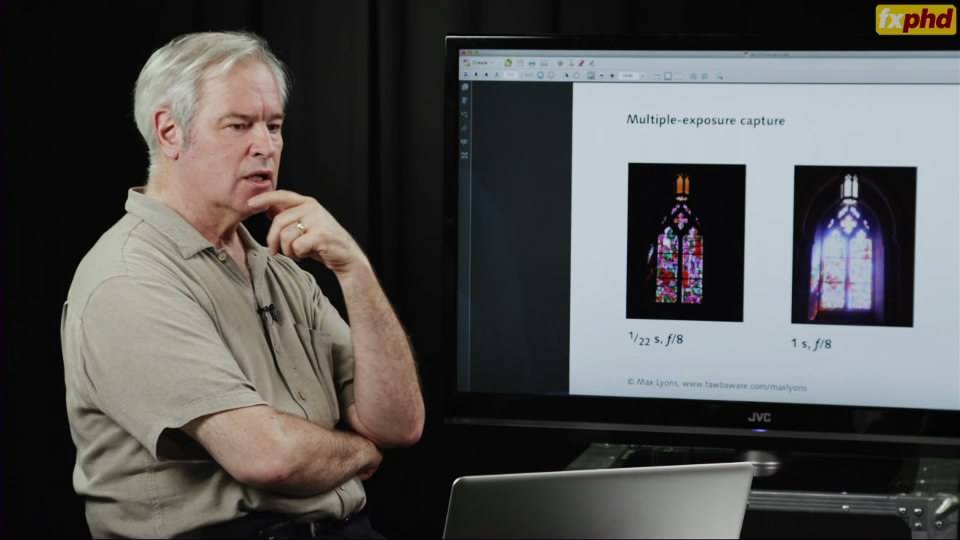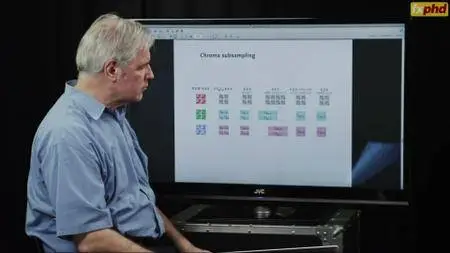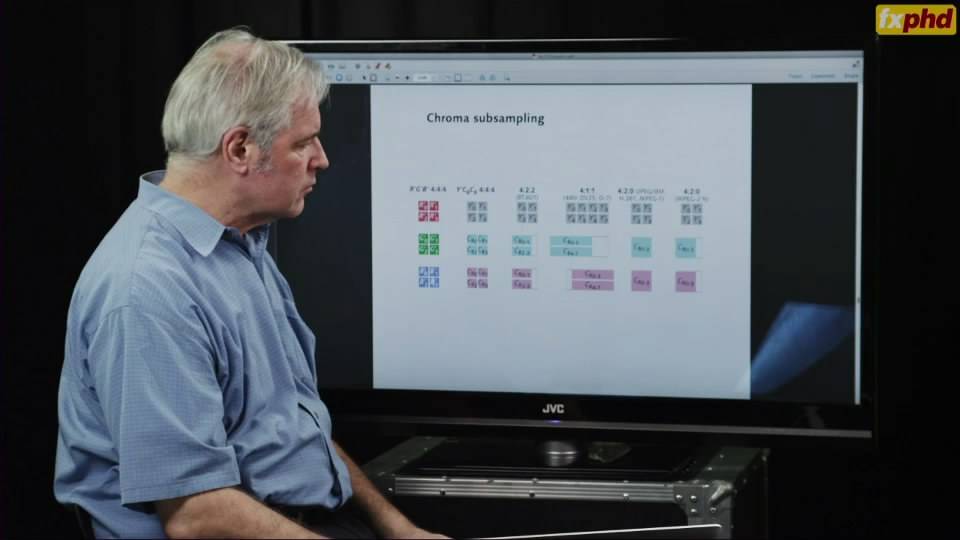Advanced Digital Colour Theory
HDRips | MP4/AVC, ~1467 kb/s | 960x540 | Duration: 08:58:33 | English: AAC, 48 kb/s (1 ch) | + PDF Guides | 5.81 GB
Genre: Color, Photo
HDRips | MP4/AVC, ~1467 kb/s | 960x540 | Duration: 08:58:33 | English: AAC, 48 kb/s (1 ch) | + PDF Guides | 5.81 GB
Genre: Color, Photo
Colour image coding is at the heart of digital imaging; it is a critical element of high-quality digital cinema and HD production. In this course we follow colour from its spectral form in front of the camera into acquisition where colour is reduced to 3 components, then through the post-production, grading, finishing, approval, mastering, distribution, and display/exhibition stages. We discuss the colour transforms and colourspaces used at all of these stages. We discuss colour aspects of subsampling and compression (H.264, as in Canon cameras, ProRes, as in Alexa, and JPEG2000, as used in DCPs).
We'll present lots of diagrams, graphs, and equations using math at intermediate level; we hope that you're quite familiar with y = mx + B, and somewhat familiar with matrices, power functions, and logarithms. (WARNING: The presenter is Canadian; colour will be spelled with a "u".)
Course syllabus
Class 1: Technical introduction to colour science: We introduce the spectral power distributions of physics using Newton's drawing from the year 1666. We introduce the CIE standard observer, and the tristimulus values ("tristimuli") that result from applying those weighting functions to SPDs. We derive RGB values, and demonstrate RGB colour mixtures. We review the CMY coding of motion picture film, and review the densitometric coding of classic CPD/DPX systems.
Class 2: Perceptually uniform coding: We define the concept of linearity, and explain why it is important in modern imaging systems. We define lightness. We introduce power functions and logarithms. We discuss the code-100 problem. We ask, what bit depth is necessary to represent reality? What bit depth is required to satisfy human vision?
Class 3: Lin, log, and quasilog coding: There are two kinds of "linear" acquisition and two kinds of "log" acquisition; we elaborate. We outline various proprietary log formats. We discuss theoretical and practical aspects of acquisition coding.
Class 4: Colour transforms: There are many kinds of colour transforms: affine transforms (3x3 linear matrix, in LMS, XYZ, RGB colourspaces, and also in Y'CBCR spaces), projective transforms transforms (used in CIE xy), and various nonlinear transforms (including CIE LAB). We discuss 3D LUTs, gamut mapping, and ICC colour management systems.
Class 5: The ACES workflow, colourspaces, and transforms: Scene-referred linear-light image coding is fast becoming the standard way to do high-end production. We describe the ACES and OCES colourspaces, and the ACES colour transforms: IDT, LMT, RRT, RDT, and ODT.
Class 6: We explain the theoretical and practical necessity of a camera 3x3 matrix. We describe how to build a transform from real camera RGB (device space) to the ACES interchange colourspace - that is, we explain how to build an ACES input device transform, IDT. We also discuss why IDTs have illumination dependencies.
Class 7: Video colour coding: We present a systematic overview of gamma, including the DCI standard for digital cinema (2.6), the BT.1886 standard for HD (2.4) and the sRGB standard for desktop computing (2.2). We review chroma subsampling (4:4:4, 4:2:2, 4:2:0), and discuss its effects on noise, resolution, and bit depth.
Class 8: Distribution: We describe in detail the DCI P3 image coding used for reference D-cinema projectors, and the XYZ coding for DCPs. We outline compression issues associated with ProRes, H.264, and JPEG2000.
Class 9: HD, 2K, 4K ("UHD"), 8K: We detail current and future image formats, and we discuss the underlying theory of spatial sampling, resampling, and oversampling.
Class 10: Emergent display systems: Wide gamut colour is emerging rapidly. We discuss LED backlights on LCD displays; OLED displays; laser displays; spatially modulated backlights and high dynamic range displays. We also discuss the open issue of observer metamerism in emergent displays.
Kelby Training Collection
The Complete Guide To Composit...olor, & Composition (2015)
The 5 Day Deal Photography Bundle III
Digital Photoshop High-End Retouching Tutorial Videos & Services
Erik Almas - On Aspects of Image Making
Shooting Glamour Instructional
WedFilm Academy - Cinematic Wedding Film Tutorials
Everyday Photoshop: From Workflow to Smartflow
Nikon School - Fast, Fun & Easy Great Digital Pictures
Nikon School - Understanding Digital Photography
Photoshop Retouching Techniques: Skin
OneLight Photography Workshop
Photoshop: Content-Aware & Cloning
Karl Taylor - How To Use Your SLR Camera For Full Creative Control
Retouching & Photoshop Techniques
Matt Garrett - Photoshop Masterclass (with bonuses)
The 5 Smart Photoshop Tips and Tricks
Your First Day with Photoshop CC
Adventure Photography: Capturing In-Between Moments
Fashion Photography Exposed
Working with Models
Working with Hair and Makeup
Inside The Glamour Studio
Mastering Color with Ben Willmore
Children's Portrait Photography with Tamara Lackey
Glamour Photo Retouching Techniques
Advanced Lighting for Food Photography
Senior Photography: Break the Mold
Pets and People Photography
AWAI Photography - Turn Your Pictures Into Cash
Zombie Photo Manipulation Techniques in Photoshop
Lightroom 5 Crash Course
Lightroom 5 In Depth: Editing Your Photos
Lightroom 5 Killer Tips
Fundamentals of Photography II
10 Things Every Photoshop Designer Should Know
Lightroom CC Complete Training
Photoshop In-Depth: Mastering the Composition
Add a Splash to Your Photos Using Photoshop
Photoshop fur Fotografen - Schritt fur Schritt zu perfekten Fotos
Lightroom CC Killer Tips
Mastering Smart Collections in Lightroom CC
Using Lightroom Mobile in Lightroom CC
Welcome to the best eLearning video (English, German, French, Spanish language) and many more: LINK
Do not forget to check my blog! Updated regularly! Add in bookmarks my blog :)
PM me if Links not working!
Do not forget to check my blog! Updated regularly! Add in bookmarks my blog :)
PM me if Links not working!
No mirrors pls!



